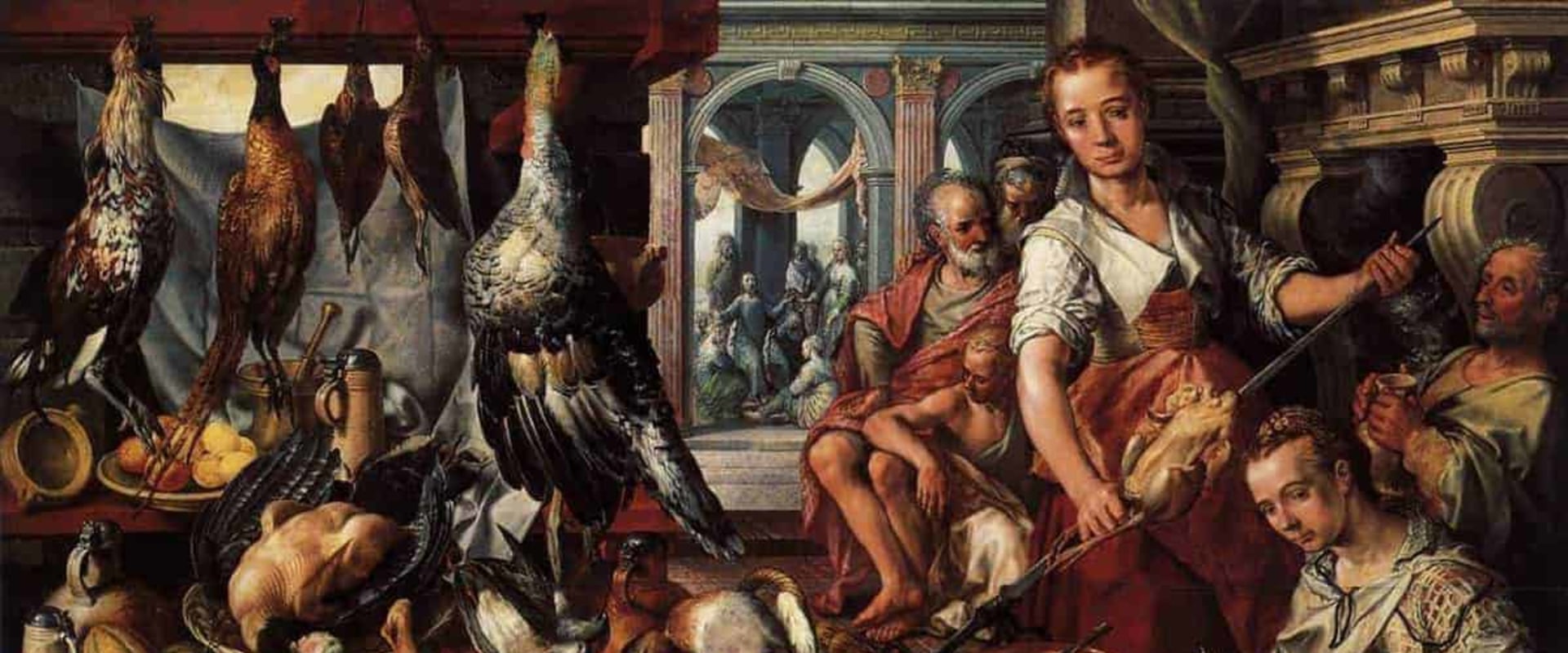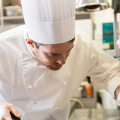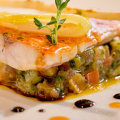Haute cuisine, translated from French as haute cuisine invented in France by George Augustine Escoffier in the mid-19th century. This kitchen is characterized by an elegant presentation with meticulous attention to detail and a rigorous search for quality ingredients and techniques.
Haute cuisine
represents cooking and eating food carefully prepared with regular and top quality ingredients, prepared by specialists and commissioned by those with the financial means to do so. It has had a long evolution through the monarchy and the bourgeoisie and its ability to explore and afford dishes prepared with exotic and varied flavors and that look like architectural wonders.Haute cuisine differed from traditional French cuisine by what it was cooked and served, by obtaining top quality ingredients, such as fruit out of season, and by using ingredients that are not normally found in France. Haute cuisine is influenced by French cuisine, with elaborate preparations and presentations, which serves small and multiple dishes prepared by a hierarchical kitchen staff, historically in large restaurants and hotels in Europe. The cuisine was very rich and opulent, with exquisite sauces made from butter, cream and flour, the basis of many typical French sauces that are still used today. The 17th-century chef and writer La Varenne (1615-1667) marked a shift from cooking, as it was known in the Middle Ages, to slightly lighter dishes and more modest presentations.
Later, Antonin Carême (1784-183) also published works on cooking and simplified and codified an earlier and even more complex kitchen. Nineteenth-century French haute cuisine interacted with the development of haute cuisine in Great Britain. Georges Auguste Escoffier was a central figure in the modernization of haute cuisine starting in 1900, which became known as cuisine classique. These were simplifications and refinements of the early works of Carême, Jules Gouffé and Urbain Dubois.
It was practiced in large restaurants and hotels in Europe and elsewhere for much of the 20th century. The main innovations consisted of replacing French service (serving all dishes at the same time) with service à la russe (serving meals on plates) and developing a kitchen system, based on Escoffier's Le Guide Culinaire, which formalized the preparation of sauces and dishes. In its time, it was considered the pinnacle of haute cuisine and was a different style from bourgeois cuisine (the cuisine of wealthy city dwellers), working-class cuisine in bars and homes, and the cuisine of the French provinces. In general, nouvelle cuisine emphasizes natural flavors, so the freshest possible ingredients are used, preparation is simplified, heavy sauces are less common, as are strong marinades for meat, and cooking times tend to be reduced.
Nouvelle cuisine was a movement towards conceptualism and minimalism and was a direct juxtaposition with previous haute cuisine styles, which were much more extravagant. Although the menus were getting shorter, the dishes used more ingenious pairings and were inspired by regional dishes. However, within 20 years, chefs began to return to the previous style of haute cuisine, although many of the new techniques remained. Great cuisine, also called haute cuisine, is the classic cuisine of France as it evolved from its inception in the 16th century to its peak in the luxurious banquets of the 19th century.
For this reason, early haute cuisine was accessible to a small demographic of rich and powerful people. Haute cuisine was developed to please the most demanding palates with a tasty meal, and a lot of it. During the 20th century, and in particular in the years after World War II, French haute cuisine (haute cuisine, that is, foods with the highest standards) was considered the ultimate in exquisite culinary experiences. The techniques of haute cuisine, and the preparation time involved, made this style difficult for home chefs to handle, even in elegant French kitchens.
This controversy was designed to distance French chefs from their deep-seated devotion to the traditions of haute cuisine. To properly prepare haute cuisine recipes the old fashioned way, it's best to have a professional kitchen, a home feature that was beyond the imagination and, certainly, the budgets of those midcentury housewives. One technique that creates a rich and tasty sauce without all the butter and cream of the haute cuisine style is the de-glaze method of sautéing prepared foods in a pan. And the great restaurants and chefs of French haute cuisine began to adapt their dishes (and their way of thinking) to the times.
This “assembly line” approach to building plates filled with glorious food may have been inspired by Henry Ford; its introduction to professional kitchens significantly reduced waiting times and allowed commercial establishments to turn the tables and, therefore, make more profits, without affecting the quality of this haute cuisine. . .




Leave Reply